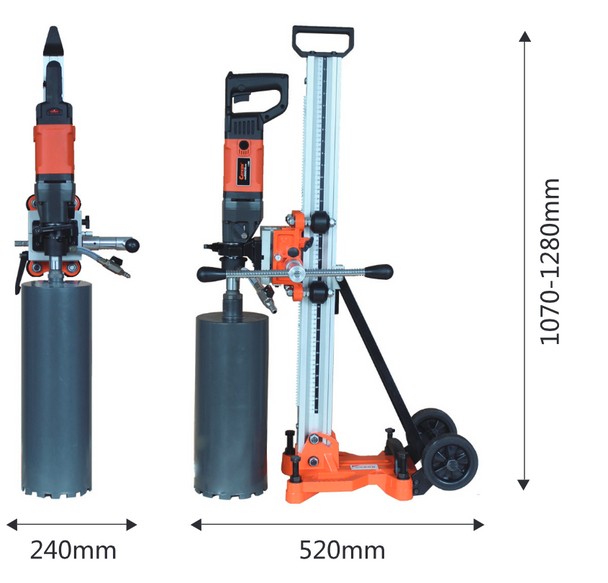Jos Plateau's Solid Mineral Sector: Equipment Needs for Extraction and Processing
Key Takeaways
- Rich Mineral Reserves: Jos Plateau is rich in solid minerals like tin, columbite, and tantalite, making it a significant area for Nigeria's mining industry.
- Specialized Equipment: Efficient extraction and processing of these minerals require specialized equipment, including drilling machines, crushers, and beneficiation plants.
- Technological Upgrades: Modernizing equipment with advanced technologies is essential to increase productivity, reduce waste, and enhance the quality of extracted minerals.
- Environmental Considerations: Sustainable mining practices, supported by appropriate equipment, are crucial to minimize environmental impact and ensure long-term viability.
- Economic Potential: Investing in the right equipment and infrastructure can boost the economic output of Jos Plateau's solid mineral sector, contributing significantly to the region's development.
Introduction
Jos Plateau, located in the central region of Nigeria, is renowned for its rich deposits of solid minerals, including tin, columbite, limestone, and several other valuable minerals. The region has been a key player in Nigeria’s mining industry since colonial times, with mining activities dating back over a century. Historically, Jos Plateau was one of the leading producers of tin in the world, which contributed significantly to Nigeria’s economy. Today, while the industry has seen a decline due to various challenges, it remains an essential part of the region's economic fabric.
The use of modern equipment in the extraction and processing of minerals is crucial for enhancing productivity, ensuring safety, and minimizing environmental impact. Traditional mining methods, while still prevalent in many parts of Jos Plateau, are often inefficient and hazardous. By contrast, modern equipment allows for more precise extraction, reduces waste, and increases the overall yield of minerals. This not only boosts the profitability of mining operations but also contributes to the sustainable development of the sector.
This article aims to explore the specific equipment needs required for successful extraction and processing of minerals in Jos Plateau. By identifying the critical machinery and technologies necessary for the sector, the article will provide insights into how the region can enhance its mining operations and maximize its potential.
Cayken Diamond Core Drilling Machine SCY 26/3EBM
Current State of Mining in Jos Plateau
1. Traditional vs. Modern Mining Practices
In Jos Plateau, traditional mining practices have long been the norm. These methods often involve manual labor and rudimentary tools, such as picks, shovels, and pans. While these techniques have historically been effective, they are labor-intensive, time-consuming, and yield lower outputs. Additionally, traditional mining is associated with higher safety risks and environmental degradation.
On the other hand, modern mining practices incorporate advanced machinery and technology, enabling more efficient extraction and processing of minerals. For example, mechanized drilling and blasting techniques allow miners to access deeper ore deposits more safely and quickly. The adoption of modern mining equipment in Jos Plateau is gradually increasing, although the pace of change is hindered by various factors, including cost, lack of technical expertise, and limited access to modern machinery.
2. Challenges Faced by the Sector
The mining sector in Jos Plateau faces several challenges that hinder its growth and development. Key among these are:
1. Environmental Challenges: The region has experienced significant environmental degradation due to mining activities. Land erosion, deforestation, and water pollution are common issues, exacerbated by the use of outdated mining methods.
2. Economic and Infrastructural Constraints: The high cost of modern mining equipment and the lack of adequate infrastructure, such as roads and electricity, pose significant barriers to the adoption of advanced technology. Small-scale miners, who make up a large portion of the mining workforce in Jos Plateau, often lack the financial resources to invest in modern equipment.
3. Regulatory Issues and Policy Gaps: The regulatory framework governing mining in Nigeria is often seen as inadequate or poorly enforced. This has led to illegal mining activities, which further strain the sector and discourage legitimate investment in modern equipment and technology.
Demolition Hammer and Breaker INGCO
Critical Equipment for Mineral Extraction
1. Drilling and Blasting Equipment
Drilling and blasting are fundamental processes in mineral extraction, particularly in hard rock mining. In Jos Plateau, where minerals like tin and columbite are often found embedded in hard rock formations, the use of appropriate drilling and blasting equipment is essential.
Drilling Rigs: Modern drilling rigs come in various sizes and capabilities, from portable units for small-scale operations to large, truck-mounted rigs for more extensive mining projects. These rigs are designed to drill precise holes in the rock, allowing for the placement of explosives.
Blasting Materials and Safety Equipment: The process of blasting involves the use of explosives to break apart rock formations, making it easier to extract the minerals. Safety is a critical consideration in blasting operations. Properly designed and maintained equipment, such as blast mats and shields, is necessary to protect workers and minimize environmental impact.
2. Excavation and Earthmoving Machinery
Once the rock has been blasted, the next step involves removing the broken material to access the ore beneath. This is where excavation and earthmoving machinery come into play.
Excavators and Loaders: Excavators are used to dig up and remove large quantities of earth and rock, while loaders transfer the material into transport vehicles. Modern excavators are equipped with hydraulic systems that allow for greater precision and efficiency in handling material.
Bulldozers: Bulldozers are used to clear land, remove debris, and prepare the mining site for further operations. They are especially useful in creating access roads and leveling the ground for safe and efficient mining activities.
3. Haulage and Transportation Equipment
Efficient transportation of extracted minerals is crucial for minimizing operational costs and ensuring timely delivery to processing facilities.
Dump Trucks: Dump trucks are essential for transporting large quantities of mined material from the excavation site to processing plants or storage areas. They are designed to handle heavy loads and rough terrain, making them ideal for mining operations in Jos Plateau.
Conveyors: In some mining operations, conveyors are used to transport minerals over long distances, particularly in large-scale operations where manual transportation would be impractical. Conveyors can significantly reduce transportation time and labor costs.
Caterpillar Bulldozer CATERPILLAR D6H LGP
Essential Equipment for Mineral Processing
1. Crushing and Grinding Machinery
Once the minerals are extracted from the earth, they must be processed to separate valuable elements from the waste material. Crushing and grinding are the first steps in this process.
Crushers: Crushers are machines designed to reduce the size of large rocks and ore into smaller, more manageable pieces. Different types of crushers, such as jaw crushers, cone crushers, and impact crushers, are used depending on the hardness and size of the material being processed.
Grinders and Mills: After crushing, the material is further reduced in size using grinders and mills. This process is critical for liberating the valuable minerals from the surrounding rock, making them easier to extract in subsequent processing steps.
2. Screening and Separation Equipment
Screening and separation are key processes in mineral processing that help to sort and concentrate the valuable minerals.
Screens: Screens are used to separate materials based on size, ensuring that only appropriately sized particles proceed to the next stage of processing. Different types of screens, such as vibrating screens and rotary screens, are used depending on the material and desired outcome.
Classifiers and Separators: These machines further refine the material by separating minerals based on properties such as density, magnetism, or conductivity. This step is crucial for concentrating the minerals before final processing or smelting.
3. Beneficiation Equipment
Beneficiation is the process of enhancing the quality of the extracted mineral, increasing its value and suitability for industrial use. Various beneficiation equipment plays a crucial role in this stage.
Flotation Machines: Flotation is a widely used method for separating valuable minerals from the gangue. Flotation machines use chemical reagents and air bubbles to separate the desired mineral particles from the slurry. This equipment is particularly effective in processing fine-grained ores, such as those found in Jos Plateau.
Magnetic Separators: Magnetic separators are used to separate magnetic minerals from non-magnetic ones. This equipment is essential in processing ores containing iron or other ferromagnetic minerals. Magnetic separation is efficient, low-cost, and environmentally friendly, making it a popular choice in modern mineral processing operations.
4. Dewatering and Filtration Equipment
After the beneficiation process, it is crucial to remove excess water from the mineral concentrates. This step ensures that the final product is of the right moisture content for further processing or sale.
Pumps: Dewatering pumps are used to remove water from the mineral slurry. These pumps are designed to handle abrasive materials and high volumes of water, ensuring efficient dewatering of the concentrate.
Filters and Drying Systems: Filtration equipment, such as filter presses and vacuum filters, are used to separate solids from liquids. Once the water is removed, drying systems like rotary dryers or fluidized bed dryers are employed to reduce the moisture content to the desired level, making the minerals ready for the market or further processing.
Honda Water Pump WL30XH
Technology Integration and Automation
1. Role of Digital Technologies in Mining
The integration of digital technologies is revolutionizing the mining industry globally, and Jos Plateau is no exception. Advanced technologies such as the Internet of Things (IoT), artificial intelligence (AI), and machine learning are increasingly being adopted to optimize mining operations.
IoT in Mining: IoT devices can be used to monitor equipment performance, track ore movement, and manage energy consumption. This real-time data helps in making informed decisions, reducing downtime, and improving overall efficiency.
AI and Machine Learning: AI and machine learning algorithms can analyze large datasets to predict equipment failures, optimize processing parameters, and enhance safety. These technologies are particularly valuable in complex mining environments, where multiple variables need to be managed simultaneously.
2. Case Studies of Successful Technology Adoption
1. Australia’s Mining Sector: Australia’s mining industry has successfully integrated digital technologies to improve efficiency and safety. For instance, autonomous trucks and drill rigs have been deployed in remote areas, reducing the need for human intervention and increasing operational efficiency.
2. South Africa’s Platinum Mines: South Africa’s platinum mines have adopted AI-based systems to optimize mineral processing, resulting in higher recovery rates and reduced energy consumption. These case studies demonstrate the potential benefits of technology adoption in mining and offer valuable lessons for Jos Plateau.
Environmental Considerations and Sustainability
1. Impact of Mining on the Jos Plateau Environment
Mining activities in Jos Plateau have significantly impacted the environment. The extraction processes have led to deforestation, soil erosion, and water pollution, affecting local communities and biodiversity.
Land Degradation: Open-pit mining and the removal of vegetation have led to severe soil erosion and the creation of large, barren landscapes. This degradation not only reduces the land's agricultural potential but also contributes to the loss of habitat for local wildlife.
Water Pollution: The use of chemicals in mineral processing, combined with the runoff from mining sites, has polluted rivers and streams in the region. This pollution affects both aquatic life and the availability of clean water for local communities.
2. Sustainable Mining Practices
To mitigate the environmental impact of mining, it is essential to adopt sustainable practices that balance economic growth with environmental preservation.
Reclamation and Land Rehabilitation: Reclamation involves restoring mined land to its original state or repurposing it for agricultural or recreational use. Techniques such as reforestation, soil stabilization, and the creation of artificial lakes can help rehabilitate degraded land and improve the environment.
Waste Management and Recycling: Proper management of mining waste is crucial for reducing environmental impact. Recycling of tailings, the use of environmentally friendly chemicals, and the reduction of waste generation are practices that can significantly reduce the environmental footprint of mining operations.
3. Green Equipment and Technologies
The mining industry is increasingly adopting green technologies to minimize its environmental impact. This includes the use of energy-efficient machinery, renewable energy sources, and eco-friendly mining practices.
Energy-Efficient Equipment: Modern mining equipment is designed to consume less energy while maintaining high productivity. This not only reduces operational costs but also lowers the carbon footprint of mining activities.
Renewable Energy Integration: The use of solar, wind, and hydroelectric power in mining operations is becoming more common. By reducing reliance on fossil fuels, mining companies can significantly decrease their greenhouse gas emissions.
Policy and Regulatory Framework
1. Government Policies on Mining in Nigeria
The mining sector in Nigeria is governed by a range of policies and regulations aimed at ensuring sustainable development and attracting investment. The Nigerian Minerals and Mining Act of 2007 is the primary legislation, providing the legal framework for the exploration, exploitation, and processing of minerals in the country.
Regulatory Requirements: The Act requires that mining operations comply with environmental standards, obtain the necessary permits, and ensure the welfare of local communities. It also emphasizes the need for operators to adopt modern equipment and technologies to improve efficiency and safety.
Role of the Ministry of Mines and Steel Development: The Ministry is responsible for implementing these policies, overseeing the licensing process, and ensuring that mining activities are conducted in accordance with national laws. It also plays a crucial role in promoting the adoption of best practices and modern technologies in the mining sector.
2. Incentives for Equipment Modernization
To encourage the adoption of modern equipment and technologies in the mining sector, the Nigerian government offers several incentives to investors and operators.
Tax Breaks and Subsidies: Mining companies that invest in modern equipment and technologies can benefit from tax incentives, including deductions for capital expenditures and reduced import duties on mining machinery.
Access to Funding: The government has established various funding programs to support small and medium-scale miners in acquiring modern equipment. These programs are designed to enhance the competitiveness of the sector and drive technological advancement.
Investment Opportunities and Market Trends
1. Market Potential for Mining Equipment Suppliers
Jos Plateau presents significant opportunities for suppliers of mining equipment, given the region's rich mineral resources and the increasing shift towards modern mining practices.
Growing Demand for Equipment: As mining companies in the region continue to adopt modern methods, the demand for high-quality equipment is expected to rise. This includes machinery for drilling, blasting, excavation, transportation, and mineral processing.
Key Players and Market Competition: Several local and international companies are already active in the market, providing a range of equipment and services. However, there is still ample room for new entrants, particularly those offering innovative solutions and technologies tailored to the needs of the region.
2. Opportunities for Foreign and Local Investors
Investors, both foreign and local, have a unique opportunity to tap into the growing market for mining equipment in Jos Plateau.
Potential Areas for Investment: Key areas for investment include the production and supply of drilling rigs, earthmoving machinery, beneficiation equipment, and environmental management technologies. Investors can also explore opportunities in providing training and technical support to local miners.
Strategies for Entering the Jos Plateau Market: To successfully enter the market, investors should consider forming partnerships with local companies, participating in government initiatives, and staying informed about regulatory changes. Understanding the specific needs of the region and offering tailored solutions will be critical to gaining a competitive edge.
Frequently Asked Questions
1. What are the main minerals found in Jos Plateau?
The primary minerals found in Jos Plateau include tin, columbite, limestone, and several other valuable minerals.
2. Why is modern equipment important for mining in Jos Plateau?
Modern equipment enhances productivity, improves safety, reduces environmental impact, and increases the overall yield of minerals.
3. What challenges does the mining sector in Jos Plateau face?
The sector faces environmental challenges, economic and infrastructural constraints, and regulatory issues that hinder its growth and development.
4. What types of equipment are essential for mineral extraction in Jos Plateau?
Critical equipment includes drilling rigs, blasting materials, excavators, loaders, dump trucks, and conveyors, among others.
5. How can I invest in the mining sector in Jos Plateau?
Investors can explore opportunities in supplying mining equipment, offering technical support, and partnering with local companies. Understanding the specific needs of the region and staying informed about regulatory changes are key to successful investment.
Conclusion
In conclusion, the Jos Plateau’s solid mineral sector requires a wide range of modern equipment for both extraction and processing to maximize productivity, enhance safety, and ensure sustainable operations. From drilling rigs and excavators to crushers and flotation machines, the adoption of advanced machinery is essential for the region to realize its full mining potential.
The future of mining in Jos Plateau looks promising, with growing interest in modernizing the sector and increasing investments in technology. As more companies adopt efficient and sustainable practices, the region is poised to regain its status as a leading mining hub in Nigeria and beyond.
For companies and investors looking to enter or expand in the Jos Plateau mining sector, the time is now to invest in modern equipment and technologies. By partnering with a trusted supplier like GZ Industrial Supplies, you can access a comprehensive range of mining equipment and support services tailored to your specific needs. Visit GZ Industrial Supplies today to explore your options and take the first step towards enhancing your mining operations.












